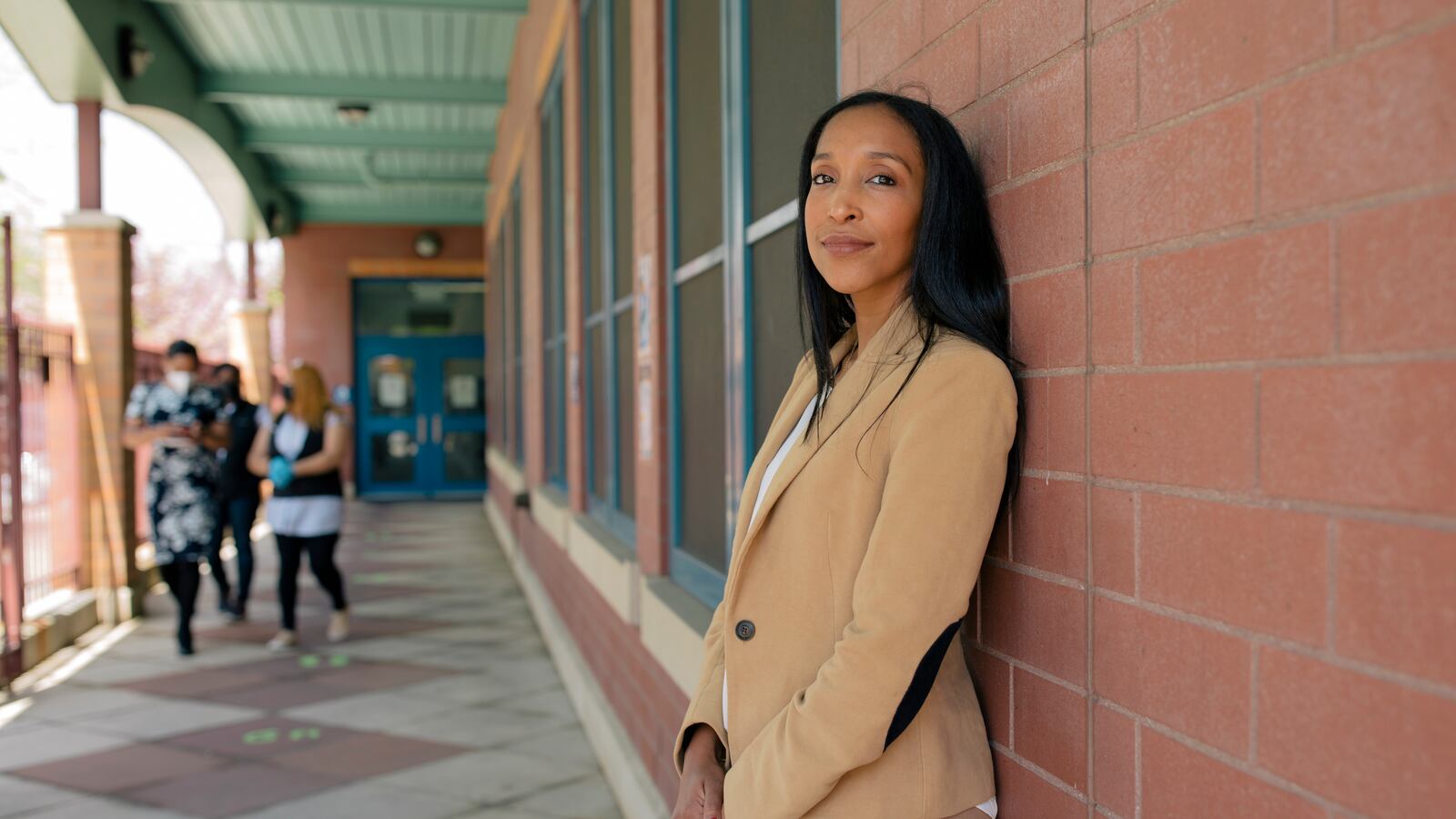Yasirys Pichardo was excited to start a new job in late February 2020 overseeing the after-school program at Brooklyn’s P.S. 89, a dual language 3-K-8 school.
Within a month, as coronavirus raged in New York City and school buildings shuttered, Pichardo’s new job had completely transformed. She and colleagues with Cypress Hills Local Development Corporation, the community-based organization that runs the after-school program, found themselves doing triage for a neighborhood hard hit by the virus.
Working hand-in-hand with the school and parent leaders, the organization provided extra support and connection at a time of uncertainty and loss. They trained families unfamiliar with technology to assist children with remote learning and connected parents who lost jobs to food stamps. They sent 85 care packages to families who contracted COVID. And they performed wellness checks, with Pichardo making 60 phone calls on a single day early on. Some days, those calls yielded little good news.
“I already had a relationship with those families,” said Pichardo, who moved to Cypress Hills from the Dominican Republic at the age of 13. “They were able to tell me, ‘I’m going crazy here. I don’t know how to do this.’”
Schools like P.S. 89 have long served as safety nets for parents and students by forging strong bonds with community organizations. But those needs took on a new urgency during the pandemic as staff members like Pichardo — workers with deep roots and trust in their neighborhoods — held together school communities while navigating the crisis themselves.
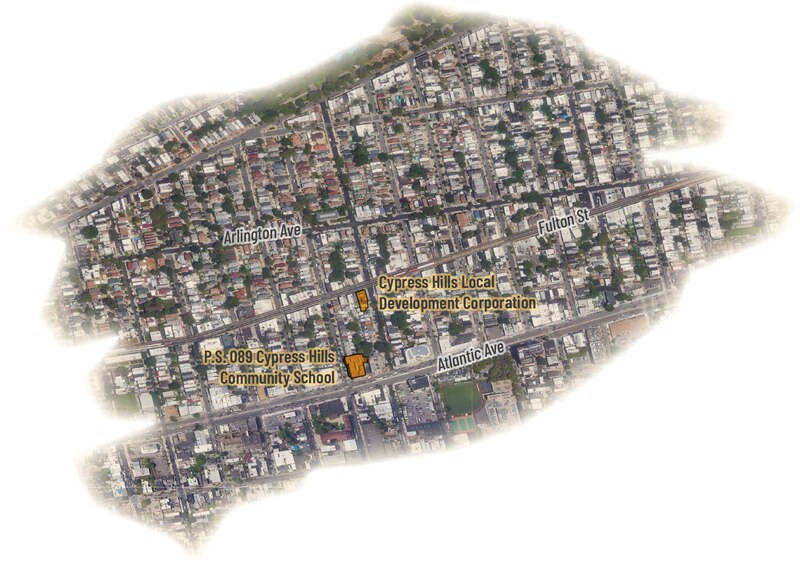
Pichardo had two young sons at home. For the first few weeks, her husband continued reporting to work as an Uber driver. And her grandfather, who lived a floor above her, was sick with COVID, confined to a hospital where he couldn’t have visitors until all hope was gone, and it was time to say goodbye.
At one point, Pichardo cried during a call with her supervisors. They urged her to take a break, but she did not want to slow down — there was so much work to be done, work that was a distraction from her own problems.
“That was a place that I could disconnect from my reality,” she recounted.
Pichardo and her colleagues spent 15 months helping students and parents survive. COVID rates were higher in Cypress Hills than the borough and citywide average, with housing conditions in the largely immigrant area ideal for spreading the coronavirus. Many families live doubled up, with Cypress Hills among the most overcrowded in the city. Poorly ventilated basement units are prevalent. For those who held on to jobs, many were in the service industry, requiring them to work outside the home when much of the rest of the city remained shut down. Now, the initial threat of the virus has subsided for the P.S. 89 community, as positivity rates drop, vaccinations increase, and about half of the school’s children have returned to the school building. But the economic and mental fallout remain high as the community sets off on the long road to recovery, normalcy, and healing.
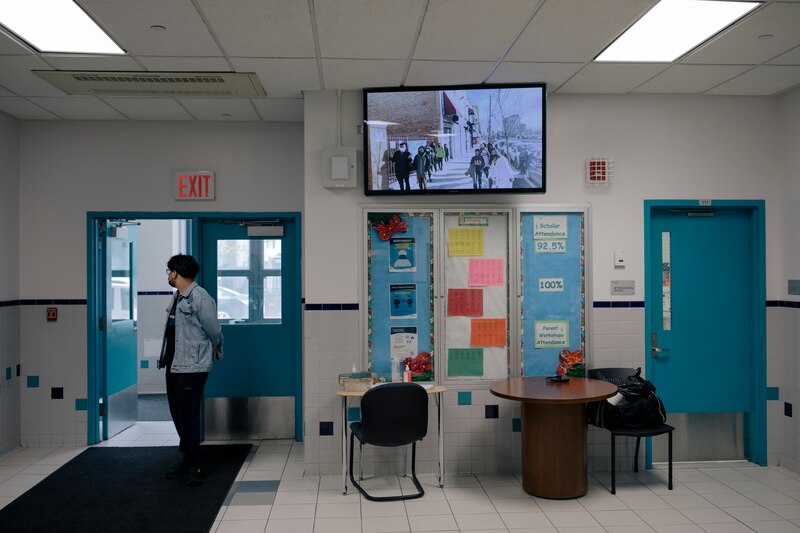
‘Come to us for support’
P.S. 89 opened in 1997 when neighborhood parents and Cypress Hills LDC partnered to create the dual-language school. The tall red-brick building, which sits along tree-lined Warwick Avenue, leans on the social service agency to connect families in need with housing help or food benefits — a relationship that predates the city’s “community school” program rolled out in 2014.
“If they have any challenges with anything in life, we want them to feel welcomed, and come to us for support,” said Irene Leon, the school’s principal.
P.S. 89 serves a high needs population: 94% of students came from low-income families, and 43% were learning English as a new language, state data from last year show. Nearly all students identified as Hispanic or Latino. More than 4 in 10 Cypress Hills residents were born outside of the United States, according to Census data, and of those, one-third are from the Dominican Republic, like Pichardo and her family.
Pichardo knew little English when she arrived nearly two decades ago in Cypress Hills, an area flanked by East New York on one side and Queens on the other, tucked in below Highland Park and cemeteries, and dotted with many Dominican-owned restaurants, barber shops and grocery stores. But she soon settled into school and a home about 20 blocks away from P.S. 89. On a recent afternoon, Pichardo, who stood tall in a tan-colored pantsuit, pointed out the bodega where she used to buy chips after classes at the nearby Franklin K. Lane High School. When she graduated from there, she enrolled at York College with dreams of becoming a teacher.
She supported herself through school with a supermarket job, but switched tracks when one of her friends suggested she apply for a youth programming job at Cypress Hills LDC. Over the next decade, she worked her way up through the organization’s ranks.
Within weeks of assuming her new role last year, she had to rewrite the playbook for how she would support more than 300 families who attended P.S. 89’s after school program.
“It was a rollercoaster,” Pichardo said.
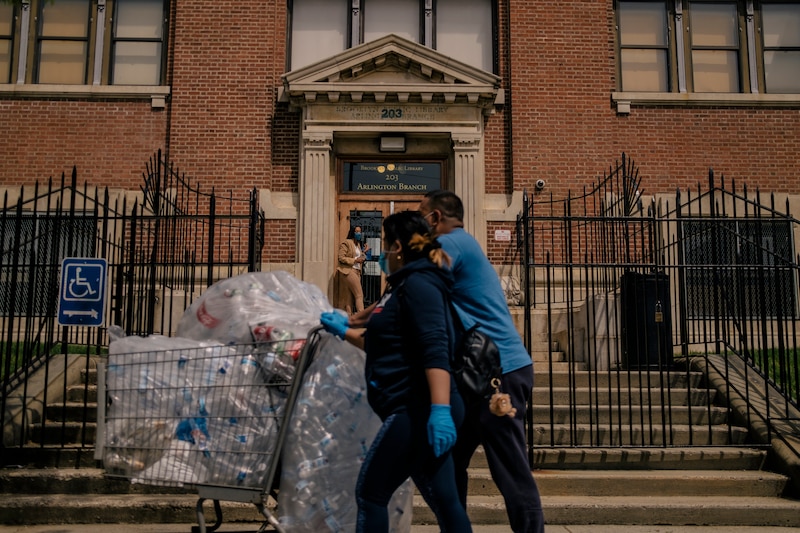
Early days of the pandemic
The first week that school buildings were closed in March 2020, Pichardo’s team of about 30 staffers pivoted to figuring out the logistics of after school in a pandemic. If the program could no longer serve as child care for parents, how could they continue providing homework help and fun activities for hundreds of children?
Through her team’s wellness calls, Pichardo determined that, like hundreds of thousands of families across the city, many P.S. 89 students did not have internet or devices at home, nor did they know how to use software like Zoom or Google Meets. Her own team, in fact, had barely used those platforms.
They spent a few weeks in a whir of activity before launching remote after school, with staff signing parents up for internet-connected devices from the city, hosting training and homework help sessions, and sending reminders. Some families got on track quickly; others waited weeks for devices or struggled to figure out the software.
As the pandemic dragged on, the wellness checks turned from tech support to something heavier.
During one call early in the pandemic, Pichardo found out that a student’s stepfather — a “young man” she had met several times — had died of COVID at the house while the child was home. His body was not removed for several hours.
More recently, she called the mother of another student who missed after school. The mother answered from the Dominican Republic, where she had taken her two sons after learning her husband there may be dying. That mom, Adelfa Francisco, said the calls and text messages helped her as she managed remote learning for her second and fourth grader from another country.
“Sometimes you want to hear, ‘How are you? How is everything?’” she said. “I felt better with a little call or a message.”
Pichardo recalls parents telling her about losing their jobs because they had to stay home with their children, and many didn’t have enough money for food. According to one analysis, the unemployment rate in Cypress Hills rose from 5% in February 2020 to 25% that June. Pichardo would refer struggling families to other Cypress Hills LDC staffers, who would help them sign up for food benefits through the Supplemental Nutrition Assistance Program or give them gift cards to grocery stores.
Neighborhood-wide, the organization has helped with 145 SNAP applications, distributed 11,000 bags of groceries, and given out 453 supermarket gift cards. Housing counselors from the agency have been working with families needing rental assistance or mortgage loan modifications and are bracing for more housing-related woes as the moratorium on evictions and foreclosure is due to end in September.
But as these efforts took off, Pichardo began dealing with her own crisis at home.
In April 2020, her 72-year-old grandfather, who lived a floor above her St. Albans, Queens, home with her parents, grandmother, and younger brother, thought he had a cold. A few days later, he couldn’t breathe. Paramedics took him to a hospital where they began treating him for COVID, but because of pandemic restrictions, Pichardo’s family couldn’t visit.
Other family members and Pichardo began feeling sick but most couldn’t get access to the limited testing at the time. Her father and brother later tested positive for coronavirus antibodies.
Since her parents don’t speak English and her brother, a teacher, often couldn’t pick up the phone during the day, Pichardo became the hospital’s main contact. Suddenly she was juggling work with calls about her grandfather’s care.
This was on top of even more demands at home with her 4-year-old and 6-month-old sons. Her mother helped care for her baby, but Pichardo had to balance meetings while caring for her older son, including helping him with remote preschool. Her husband, like many in their community, still had to continue driving for Uber, though the family soon decided it was safer for him to stay home.
Pichardo would sometimes wrap up her work day at 8 p.m. Balancing everything made her feel like she was neglecting her sons.
Shortly before the end of the tumultuous school year, Pichardo’s family was able to visit her grandfather but only “when there was no hope.”
He died on June 8, 2020. Pichardo finally took a week off to help with funeral arrangements.
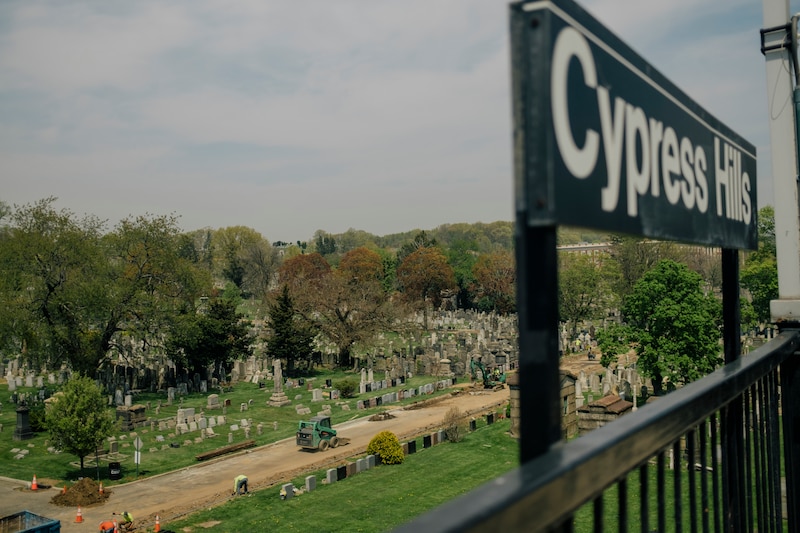
Preparing for the new school year
The next month, Pichardo returned to work in person for summer camp, with about 40 masked children arriving at the school for the first time since March of 2020. The camp was no small feat. Organizations like Cypress Hills LDC had to scramble to put programs together after city budget cuts were reversed at the last minute, and uncertainty over safety guidelines for summer camps made planning complicated.
For Pichardo, this was a trial run for in-person learning in the fall. Program leaders took children’s temperatures. Inside, the children stayed six feet apart while learning about different continents and cultures, but they went out to the playground to get some air or dance. Pichardo was pleasantly surprised that the children followed all the safety rules.
“For me it was rewarding because kids were home for months,” Pichardo said. “Not everyone has a backyard where they can go and play.”
Pichardo thinks the summer program helped win some confidence for in-person school at the start of this academic year. All of the children who attended camp signed up for hybrid learning, she said.
This September, Pichardo was finally able to oversee after school that looked closer to pre-pandemic times. At first only about 43 students attended in person on alternating days, while about 25 fully remote learners logged in from home. Participation grew over time: now, just over 250 students have joined, with 108 children in person. Many parts of the program looked like they did before the pandemic, from homework help to arts and crafts to fitness and dance. But there are differences, mainly that in-person and virtual students join the same video conference as their instructors, while “group leaders” help the students who are at the school.
On a recent day, a remote art instructor shared “fun facts” about ants with students learning from two separate classrooms, plus a child who had logged in virtually, then showed the children how to draw an ant’s body. The in-person children walked up to the camera to show the instructor their artwork, while the virtual student turned on the camera to share.
Another instructor remotely led a freestyle dance session for kindergarten students. Two in-person classes Zoomed in, along with one child at home who danced even when the music stopped. They waved their hands and kicked their feet to “Señorita” by Camila Cabello and “They Don’t Care About Us” by Michael Jackson.
Pichardo has noticed burnout among students logging on from home. After a full day on Zoom, they sometimes “just don’t want to do it” and won’t show up, Pichardo said.
Over time the after-school staff have added more fun activities designed to help parents and students destress from pandemic gloominess, including a virtual Zumba night for families.
In-person school, of course, brought with it another challenge for families: the disruption of building closures due to positive COVID cases. Pichardo’s organization still ran after school virtually, but that wasn’t helpful for families in need of child care, and in her check-ins, Pichardo heard from parents who could not work due to the closure or had to leave their jobs. At the start of the new year, because of positive cases, the school was forced to shutter “every two weeks,” Principal Leon said. These frequent closures subsided this spring, when the city reversed a conservative rule that required school buildings to shutter if two “unrelated” cases of coronavirus were reported.
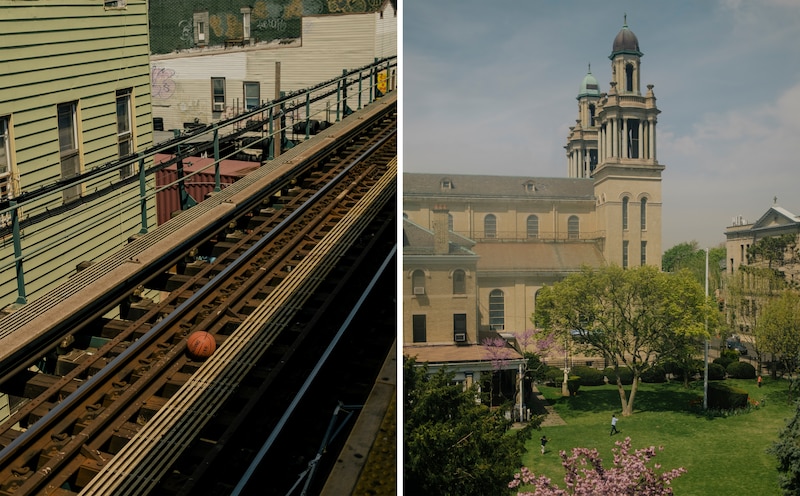
‘This is something that we have to live with’
Even though things have changed vastly since the pandemic started, Pichardo said her team still calls families once a week to check in. Nowadays, she’s not hearing about tech problems or sick relatives. There is less desperation and stress from parents. They are grappling with grief and are tired, but more families are telling her that “everything is OK,” she said.
“I don’t know if it’s because we already are coping — we already know that this is something that we need to live with,” Pichardo said.
City officials seem to be recognizing the impact during the pandemic of schools like P.S. 89 that have ties to community organizations. This summer, flush with federal relief dollars, the city is planning a wide-ranging summer program that mixes academics with enrichment activities in partnership with community-based organizations. Unlike past years, Pichardo said the school will run an academic portion in the morning, with help from her team, while her organization will oversee afternoon activities.
Additionally, Mayor Bill de Blasio is now proposing 140 new community schools saying that the model — which provides physical, mental, and social services — can help students in these areas recover. With the promise of more funding, P.S. 89, for the first time, applied to be part of the formal community school program.
Regardless of the school’s official designation, Pichardo and her team will continue supporting families who haven’t recovered from the trauma or economic loss of the pandemic. As the economy bounces back, some critical needs won’t disappear, Pichardo said.
“I know things have gotten better now that the [coronavirus] numbers are lower, but I think that’s still the need for families — food and housing and just providing the things they need.”
Amy Zimmer and Christina Veiga contributed.
Chalkbeat produced this Pandemic 360 series in partnership with Univision 41.

